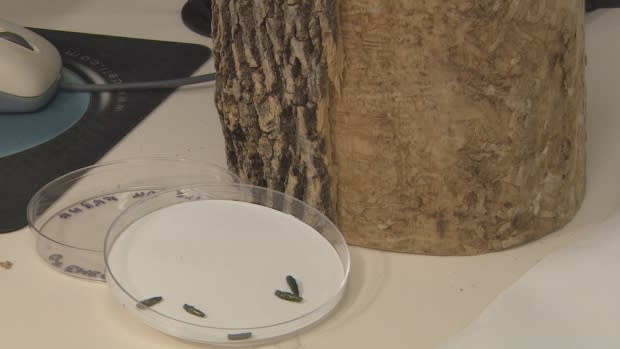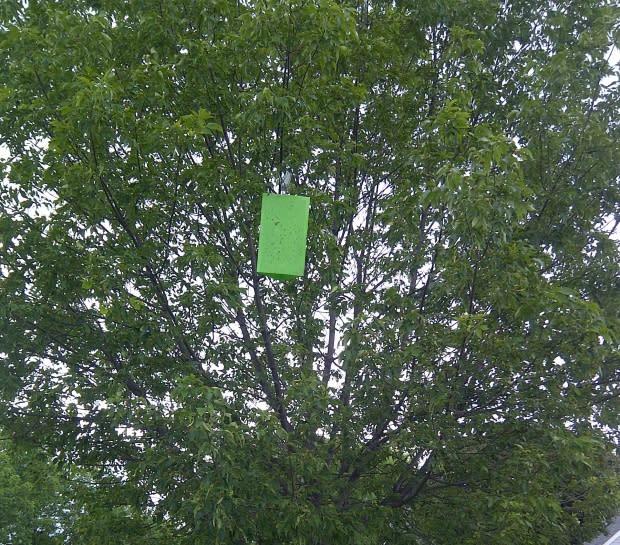As emerald ash borer invasion grows, Europe looks to Fredericton scientist for help
Peter Silk has spent years studying how to mitigate the damage caused by emerald ash borers, and now the Fredericton-based research scientist is headed to Europe to share his expertise about the "green menace."
As one of the world's leading experts on the destructive beetle, he's been invited to a meeting in Tallinn, Estonia, where an infestation of the borers is in its infancy.
Silk knows all too well what comes next.
The tiny but invasive emerald ash borer has devastated ash tree populations throughout the United States and five Canadian provinces, including New Brunswick. As its name suggests, the beetle bores into ash trees and disrupts the tree's ability to feed, killing it.

The insect arrived in North America after voyaging in wooden crates from China about 20 years ago. It's now spreading through Europe.
"It's now coming through Russia, in through Belarus into the eastern European countries," Silk said.
"It will be in France and Britain before long and destroy all their ash. So it's going to be a big problem for them.
"What I'm going to do in Estonia is try to push what little wisdom that we've learned on this insect in their direction."

Silk, who works with Natural Resources Canada, helped designed a trap in 2012 that's now been perfected. It's a bright green, hollowed-out triangle baited with a pheromone that smells of a female beetle ready to mate.
The borers "love" the colour green, he said, and will get stuck to the trap because it's covered in glue.
The City of Fredericton used the traps this summer for early detection of the borer's arrival.

Advanced knowledge of an invasion is essentially the only defence. Other than the expensive process of injecting individual trees with insecticide, once it's arrived there is no way to stop the beetle.
"Detection is the key," Silk said.
"If you can slow down the infestation, it gives you time to manage the problem of sanitation, tree removal or tree injection to protect them."

In addition to the trap, he will also showcase his branch sampling technique that detects larvae within the tree.
His recommendations for the officials he will meet with emphasize being proactive.
"You've got to be prepared because it's very insidious, it's asymptomatic and it's there before you know it."

